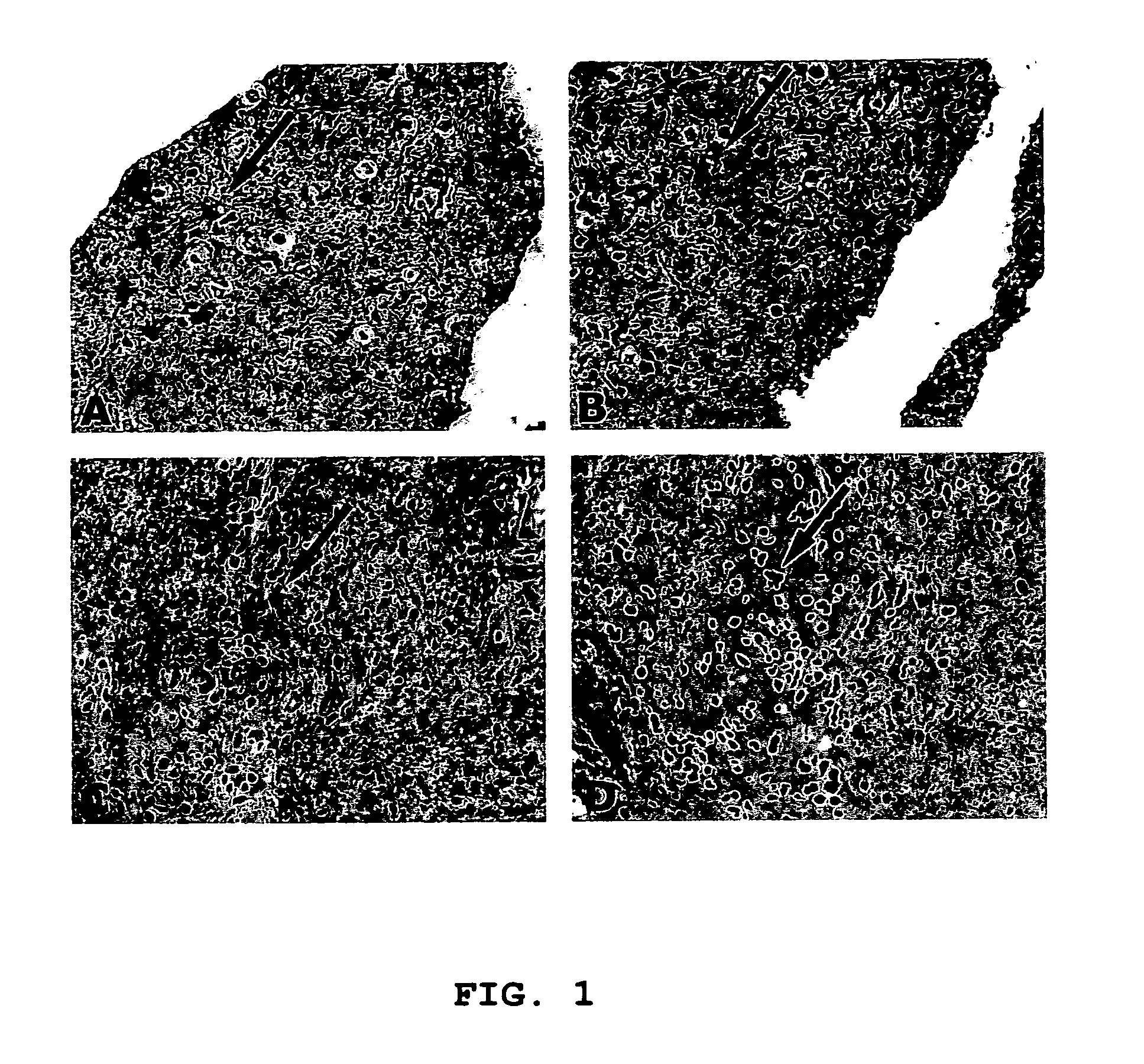Methods for diagnosis of low grade astrocytoma
a low-grade astrocytoma and low-grade astrocytoma technology, applied in the field of low-grade astrocytoma diagnosis, can solve the problems of difficult to distinguish low-grade astrocytoma cells from normal quiescent or reactive cells, difficult to detect low-grade astrocytoma cells, and small abnormal appearance of low-grade astrocytoma cells
- Summary
- Abstract
- Description
- Claims
- Application Information
AI Technical Summary
Benefits of technology
Problems solved by technology
Method used
Image
Examples
example 1
Localization of J1-31 Antigen and Glial Fibrillary Acidic Protein (GFAP) in Formalin-Fixed / Paraffin-Embedded Tissue Sections Using Immunohistochemical Staining
[0076]Formalin-fixed and paraffin-embedded tissue sections of a low grade astrocytoma were prepared and stained, as described above. Briefly, the tissue sections were treated as follows:[0077]1. Slides of the tissue sections were warmed overnight at 60° C.[0078]2. The slides were incubated in Histoclear for 5 minutes; repeated once.[0079]3. The slides were incubated in absolute ethanol for 3 minutes; repeated once.[0080]4. The slides were incubated in 95% ethanol for 3 minutes; repeated once.[0081]5. The slides were incubated in H2O2:methanol for 20 minutes.[0082]6. The slides were washed in DPBS for 5 minutes.[0083]7. The slides were treated in antigen unmasking solution (0.1 M sodium citrate buffer, pH 6.0) in a pressure-cooker and heated in a microwave oven at 600 W twice for 15 minutes each.[0084]8. The slides were left in...
PUM
| Property | Measurement | Unit |
|---|---|---|
| pH | aaaaa | aaaaa |
| volume | aaaaa | aaaaa |
| volume | aaaaa | aaaaa |
Abstract
Description
Claims
Application Information
 Login to View More
Login to View More - R&D
- Intellectual Property
- Life Sciences
- Materials
- Tech Scout
- Unparalleled Data Quality
- Higher Quality Content
- 60% Fewer Hallucinations
Browse by: Latest US Patents, China's latest patents, Technical Efficacy Thesaurus, Application Domain, Technology Topic, Popular Technical Reports.
© 2025 PatSnap. All rights reserved.Legal|Privacy policy|Modern Slavery Act Transparency Statement|Sitemap|About US| Contact US: help@patsnap.com

